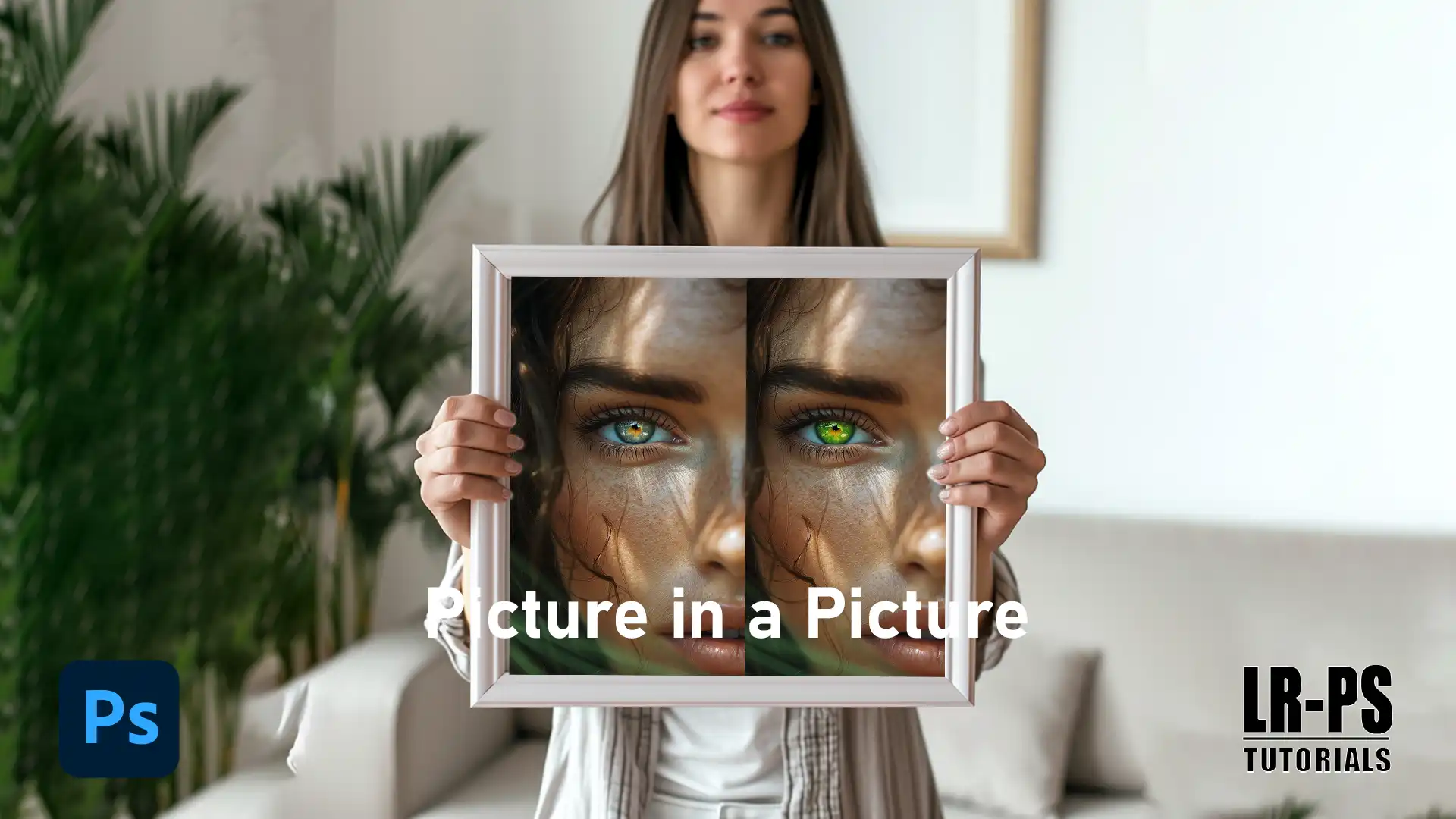
Have you ever wanted to create a stunning “picture in a picture” effect but didn’t know where to start? Well, you’re in the right place!
Picture this: a captivating image within another image, instantly drawing eyes and sparking curiosity. It’s a fantastic way to add depth and intrigue to your photos.
In this article, I’ll guide you through the simple steps to achieve this mesmerizing effect using Photoshop and Lightroom.
Whether you’re a seasoned photographer or just someone who loves to dabble in photo editing, you’ll find this technique both fun and creatively rewarding. Stick around, and let’s dive into the magic of creating a picture in a picture!
Table of Contents
How to Use Picture in Picture Mode
We all love multitasking. Picture in Picture PIP mode lets you watch videos while you continue working on other tasks.
It’s like having a mini TV screen that stays on top of your other windows.
Let’s walk through how you can set this up with simple steps.
Enabling PiP in Firefox
First, open Firefox and go to the video you want to watch. If you’re on YouTube app or another supported website, you’ll see a little icon appear on the video. Click that icon.
The video will pop out into a smaller window.
This is your PiP mode.
You can move this mini video around your screen as you like.
If you’re using other tabs and want to keep the video playing, that’s no problem. The mini window will stay on top.
You can then continue browsing without losing sight of what you’re watching. It’s a really handy way to keep your eyes on a tutorial or music video while you work on another task.
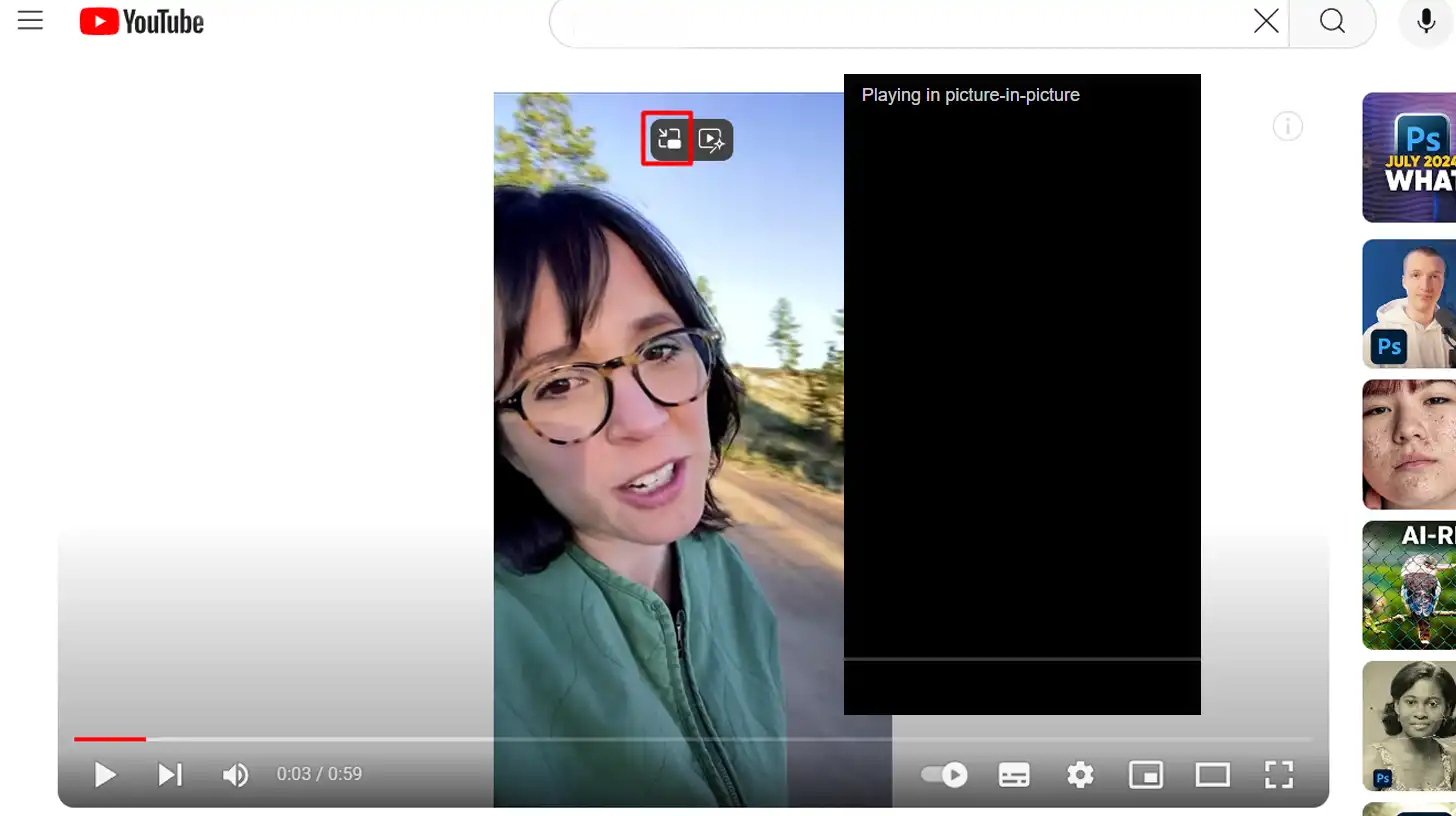
Using PiP on Different Devices
Explore how Image within Image mode operates across various devices, enhancing multitasking capabilities from mobile phones to desktops.
Let’s look at how different operating systems handle this versatile feature.
On Android
- Open your video app like the YouTube app.
- Play a video, then swipe up to go to your home screen.
- The video shrinks down into a mini-player that floats around your screen.
On iOS
The steps are similar, but PiP mode isn’t supported by all apps.
You may need to stick to web browsers for this feature. For instance, the Safari offers pretty robust support for this on many video websites.
Pro Tip: While exploring the use of PiP on different devices, it’s worth checking out some of the best mobile photo editing apps that enhance your multitasking experience, especially when managing media content on the go.
Customizing Picture in Picture Window
The Pip stream isn’t just for watching. You have some controls.
Hover over the mini windows, and you’ll see options to play, pause, or return to the current tab. These controls make it easy to manage playback without going back to the main page.
Additionally, you can resize the Picture in a Picture window.
Just grab a corner and drag it to make the video bigger or smaller. This allows you to adjust the size according to your needs without disrupting your workflow.
It’s worth noting that not all websites support PIP mode. But sites like YouTube and Google products generally do. Always check if the little pop-out icon appears on your videos.
Pro Tip: Bookmark pages that frequently use PiP for quick access next time you need it. This can save you a lot of hassle and keep your multitasking streamlined.
To enable PiP mode on Google Chrome, you first need to open Google and start playing a video.
Then, you can right-click on the video and select the Picture-in-Picture option to keep the playback video visible while using other Google services.
When customizing your Picture in Picture window, consider streaming tutorials on mirrorless cameras to simultaneously watch and apply new photography techniques without missing a step.
The Picture in Picture feature is simple but powerful. It allows you to lose yourself in a task while staying connected to the content you love.
If you’re watching tutorials on lens correction in Lightroom, you can easily apply the techniques to elevate your photography skills without switching screens.
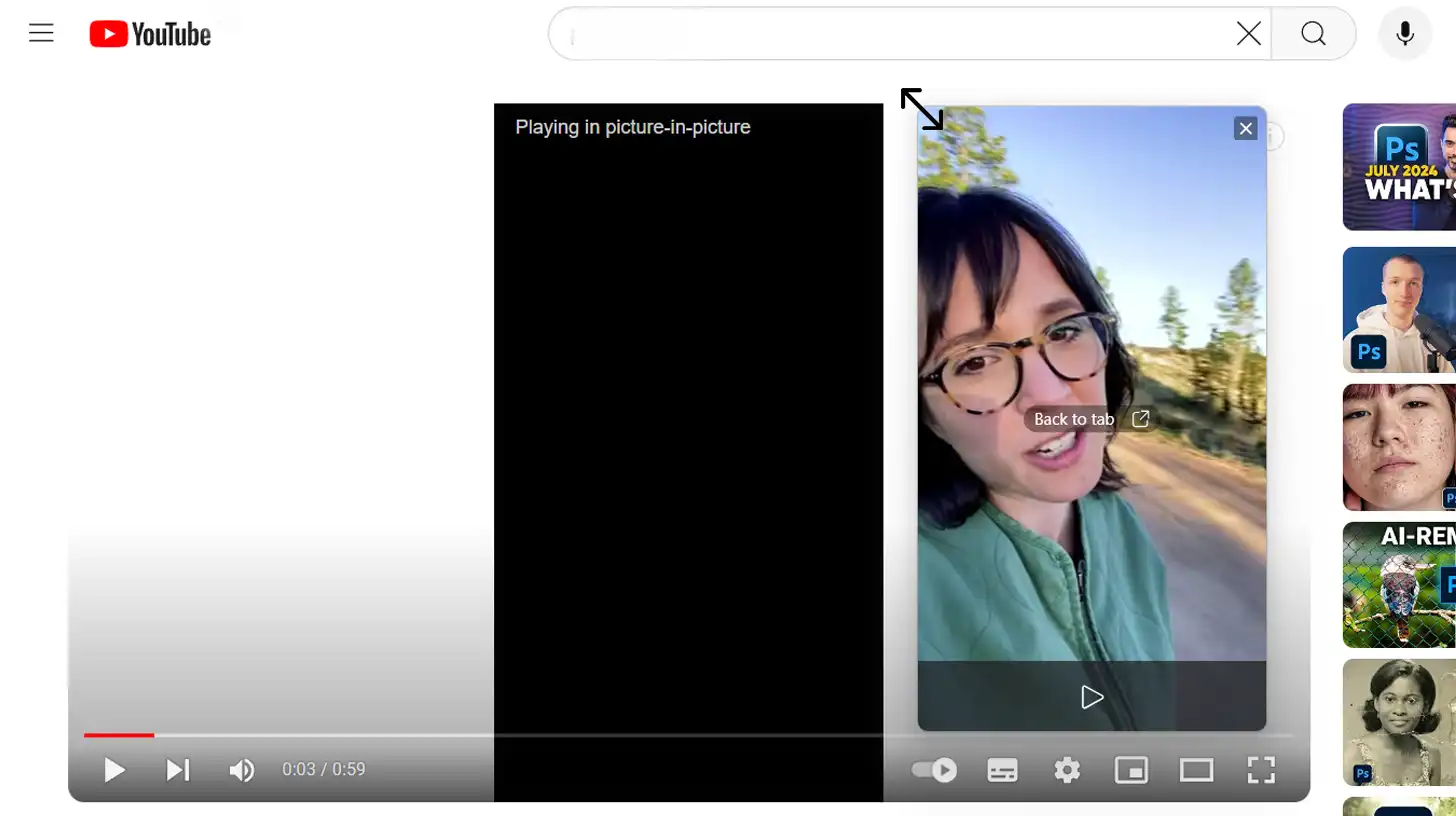
Advanced Features of Image within Image
The Picture in Picture (PiP) mode offers valuable multitasking benefits by allowing users to keep a video playing in a mini-window while working on other tasks.
It is important for maintaining productivity while enjoying visual content from platforms like YouTube.
While you watch a YouTube video in PiP mode, you can easily pause the video and switch to another page without losing track of your content.
Let’s compare the basic and advanced features of the Picture in Picture (PiP) mode. This comparison will help you understand the differences and decide which level suits your needs.
| Feature | Basic PiP | Advanced PiP |
|---|---|---|
| Setup Steps | Simple, quick setup | Multiple steps for customization |
| Device Compatibility | Limited | Wide range of devices supported |
| Control Options | Basic play/pause | Full control panel with advanced settings |
| Customization | Minimal | Extensive customization options |
| User Experience | Basic functionality | Enhanced user experience with more features |
Adjusting PiP Settings
To make the most out of PiP, let’s explore some customization options:
Resize the Window
You can adjust the size of the Picture-in-Picture window.
Simply click and drag the corners to resize it. This feature is particularly useful when you need to focus more on the video detail or just have it playing in the background.
While resizing the window for an image within an image, you can refine your layout by using the crop in Photoshop feature to ensure all elements are proportionally balanced and aesthetically pleasing.
Position the Window
The mini window can be moved around your screen.
Drag it to different positions until you find the spot that least obstructs your workflow. Having the option to reposition the PiP window helps you continue working without interruption.
When adjusting the Picture in Picture settings for editorial photography projects, carefully position the window to highlight key visual elements without obscuring important compositional details.
Controls Accessibility
Within the mini window, you can find basic controls like play, pause, and return to the main tab.
These controls ensure you don’t have to switch back to the original tab for basic playback video functions.
Whether you are listening to music or videos or following a tutorial, these settings make PiP remarkably convenient.
Pro Tip: In Adobe Photoshop, the advanced features for managing images within image controls allow you to access and adjust layers directly, ensuring precise editing and enhanced workflow efficiency.
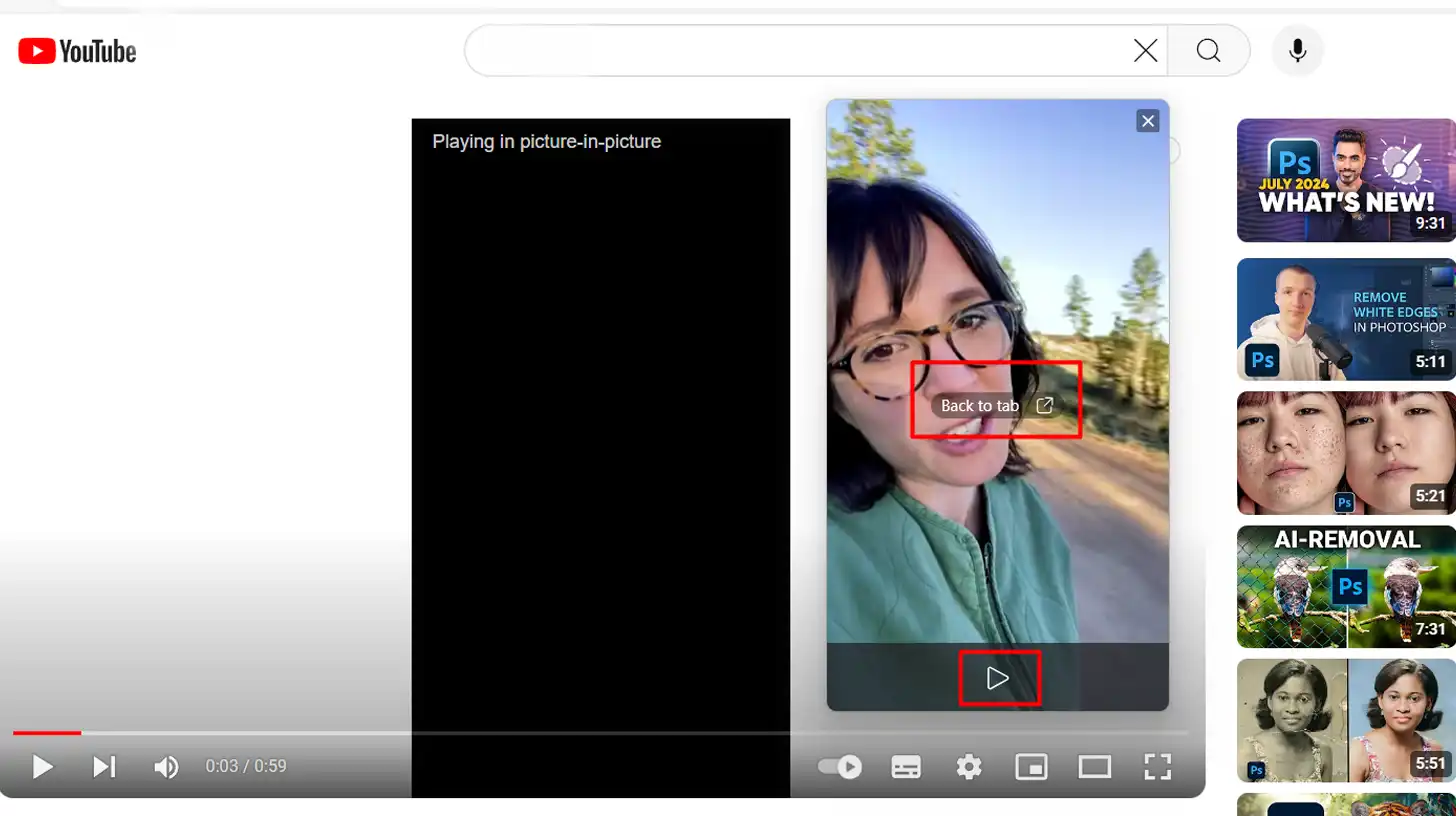
Troubleshooting PiP Issues
Sometimes, you might encounter some issues while using PiP. Here’s how to resolve them effectively:
Enable PiP in Browser Settings
If PiP isn’t working, check your browser settings. Ensure PiP is enabled by navigating to your settings menu, usually found in the menu bar of browsers like Chrome and Firefox.
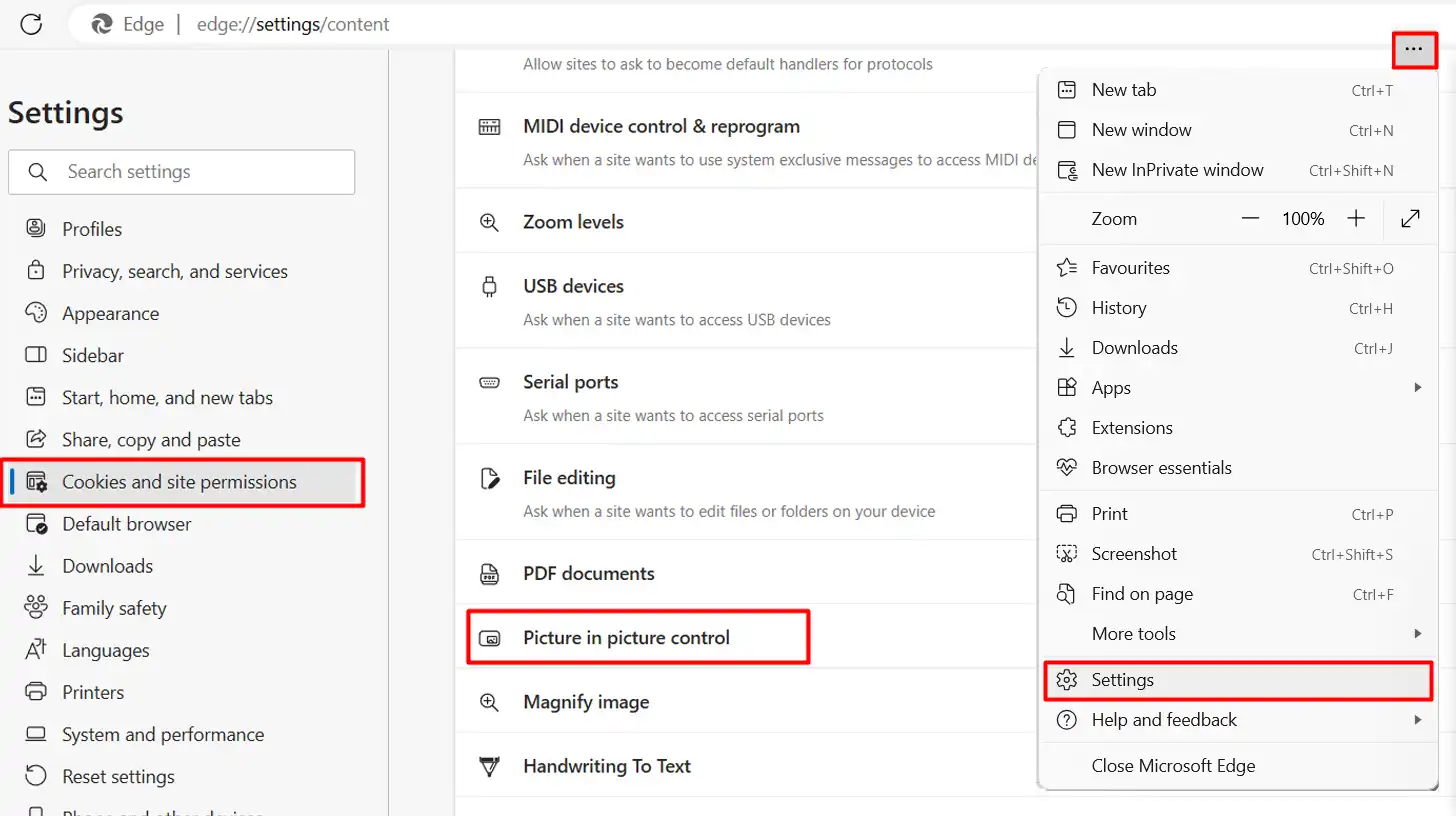
Update Your Browser
Outdated browsers may not fully support PiP. Always use the latest version for smooth functionality.
Compatible Websites
Note that, not all sites support PiP. Platforms like YouTube are compatible watching Picture-in-Picture mode, but others might not be.
Always check if the website you’re using supports this function.
Check Video Format
Sometimes PiP functionality is affected by the type of video file or stream. Confirm whether the format is supported by your browser. For example, certain formats like NEF or JPEG might not be compatible with PiP features.
Keyboard Shortcut
If PiP isn’t activating, try using the keyboard shortcut available for your portal. For instance, Chrome uses “Alt+P” as a shortcut to enable PiP.
Knowing essential tools and shortcuts can significantly enhance your user experience.
This is especially true if you frequently switch between Photoshop shortcuts for quick editing tasks and Lightroom shortcuts for efficient workflow management
Getting PiP to work seamlessly can significantly enhance your viewing and working experience.
Pro Tip: For a smoother experience, bookmark your frequently used pages where you apply Picture in Picture.
This gives you quick access without fumbling through multiple tabs.
Note that this can be particularly useful when managing multiple tasks simultaneously.
If you’re troubleshooting PiP issues, streamline the process by preparing your images in advance with Lightroom editing. Using the software Adobe Lightroom ensures your visuals are optimized for any display mode, including PiP.
Frequently Asked Questions (FAQs)
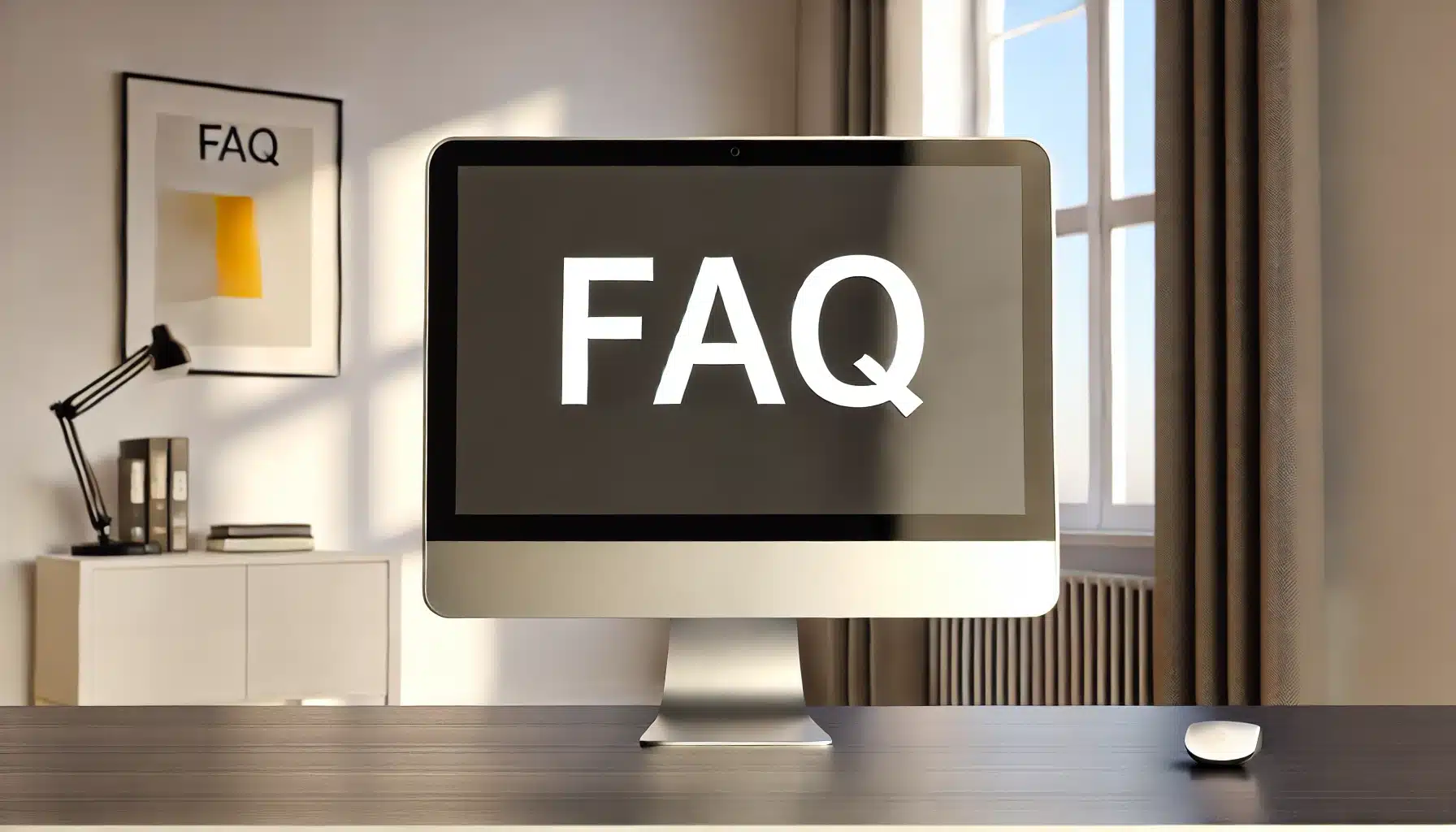
What is a picture-in-picture called?
Picture-in-picture is often abbreviated as PiP. It refers to a feature where one smaller video or image is displayed on top of a larger one, typically in a corner of the screen.
How do you do a PiP?
- On a television or video player: Look for a PiP button on your remote control or in the settings menu.
- On a computer or smartphone: Use software or other apps that support PiP functionality, such as certain media players or video conferencing apps.
How do I put a picture into a picture?
- Select an editing tool: Use software like Adobe Photoshop, GIMP, or any app that allows layer manipulation.
- Import both images: Open your background image, and then place your secondary image over it.
- Adjust the size and position of the secondary image as needed.
- Save your new composite image.
What is the meaning of PiP?
The meaning of picture-in-picture (PiP) is a multi-view method that allows one smaller sized image or video to be displayed simultaneously on a portion of a larger screen while the main program continues to run in the background. This feature is commonly used in televisions and various digital devices to watch two programs at once, such as a TV show and a surveillance camera feed.
Conclusion
In conclusion, mastering the “picture in a picture” technique has been a game-changer for my creative projects.
It has allowed me to add depth and interest to my photos, making them stand out.
Whether I’m working on personal projects or professional assignments, this technique gives me the flexibility to experiment and elevate my work to the next level.
If you’re looking to enhance your editing skills, I highly recommend checking out these comprehensive courses.
The Photoshop course has been invaluable in teaching me advanced techniques, while the Lightroom course has streamlined my workflow and improved my editing speed. Both have been instrumental in my growth as a photographer and editor.
Read more about Photoshop:














